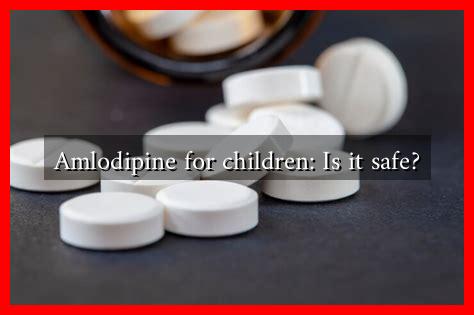-
Table of Contents
Amlodipine for Children: Is It Safe?
Amlodipine is a widely used medication primarily prescribed for the treatment of high blood pressure and certain types of angina. While its efficacy in adults is well-documented, the use of amlodipine in children raises important questions regarding safety and effectiveness. This article delves into the considerations surrounding the use of amlodipine in pediatric patients, examining its safety profile, potential side effects, and the current guidelines for its use.
Understanding Amlodipine
Amlodipine belongs to a class of medications known as calcium channel blockers. It works by relaxing the blood vessels, allowing blood to flow more easily, which in turn lowers blood pressure. In children, hypertension can be caused by various factors, including obesity, kidney disease, and certain genetic conditions. As such, the need for effective antihypertensive treatment in pediatric populations is critical.
Is Amlodipine Safe for Children?
The safety of amlodipine in children has been a topic of research and discussion among healthcare professionals. While the drug is approved for use in children aged 6 years and older, its safety profile is not as extensively studied as it is in adults. Here are some key points to consider:
- Clinical Studies: A few clinical studies have evaluated the use of amlodipine in children. A study published in the Journal of Clinical Hypertension found that amlodipine effectively reduced blood pressure in pediatric patients with essential hypertension.
- Dosage Considerations: The appropriate dosage of amlodipine for children is typically based on weight. Pediatricians often start with a lower dose and adjust as necessary, monitoring the child for any adverse effects.
- Long-term Effects: There is limited data on the long-term effects of amlodipine use in children. While short-term studies indicate that it is generally well-tolerated, the long-term safety remains uncertain.
Potential Side Effects
Like any medication, amlodipine can cause side effects. In children, these may include:
- Swelling of the legs or ankles (peripheral edema)
- Dizziness or lightheadedness
- Fatigue
- Flushing
- Palpitations
Parents and caregivers should be vigilant for these symptoms and report any concerning changes to a healthcare provider. In rare cases, more severe side effects such as allergic reactions or liver problems may occur.
Guidelines and Recommendations
Current guidelines from organizations such as the American Academy of Pediatrics (AAP) suggest that the use of antihypertensive medications, including amlodipine, should be considered when lifestyle modifications (diet, exercise) are insufficient to control high blood pressure in children. Key recommendations include:
- Regular monitoring of blood pressure in children, especially those with risk factors.
- Individualized treatment plans that consider the child’s overall health and specific needs.
- Collaboration between pediatricians, cardiologists, and nephrologists when necessary.
Case Studies and Real-World Applications
Several case studies highlight the successful use of amlodipine in managing hypertension in children. For instance, a case reported in the Pediatric Cardiology Journal described a 10-year-old boy with secondary hypertension due to renal artery stenosis who responded well to amlodipine, achieving significant blood pressure control without notable side effects.
Conclusion
In summary, while amlodipine can be an effective treatment for hypertension in children, its use should be approached with caution. The medication is generally considered safe for children aged 6 and older, but healthcare providers must carefully monitor for side effects and adjust dosages as needed. As research continues to evolve, it is essential for parents and caregivers to engage in open discussions with their healthcare providers about the risks and benefits of amlodipine and other antihypertensive medications.
Ultimately, the decision to use amlodipine in children should be based on a thorough evaluation of the child’s health status, the severity of hypertension, and the potential for long-term management. With proper oversight, amlodipine can play a crucial role in ensuring the health and well-being of pediatric patients suffering from high blood pressure.




